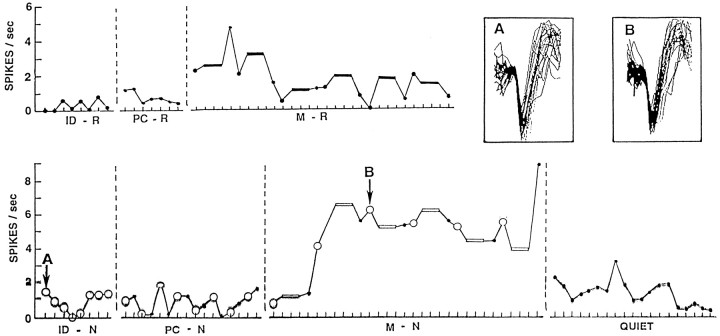Fig. 1.
Frequency of activity of neuron 3/2 from case 4 (Table 1) during each trial of identification of namable objects (ID-N) and words (ID-R), recent memory for object names (M-N) and words (M-R), the perceptual controls for names (PC-N) and words (PC-R), and a quiet period that concluded the recordings. Activity is averaged for all epochs of each item, and that for the three distracting items in each trial of the recent memory measures is averaged together (bars). The sets of items identified by the large circles for identification of names, the perceptual control, and the encoding phase of the recent memory measure for names include physically identical stimuli that, for identification and memory encoding, elicited the same overt responses. The insetsshow superimposed traces of 20 consecutive action potentials recorded during the first item of identification of names (A) and the encoding phase of the third trial of recent memory for names (B). Each mark on thex-axis is 4 sec, the period each item was shown. Each task was separated by a brief period of review of the instructions for the following task. Activity during those instructions was not assessed. The order of the tasks for this case is as shown, beginning with word identification and ending with the quiet period. Note the sustained increase in activity with memory for names, which disappears in the following quiet period and is evident to a much lesser degree with memory for words, and not at all for identification or perceptual controls for words or names. Activity throughout this recording appears to be from the same neuron, as indicated by the insets, in which action potential configuration is the same whether recorded during a low level of activity with name identification or a high sustained level of activity during memory for names.

